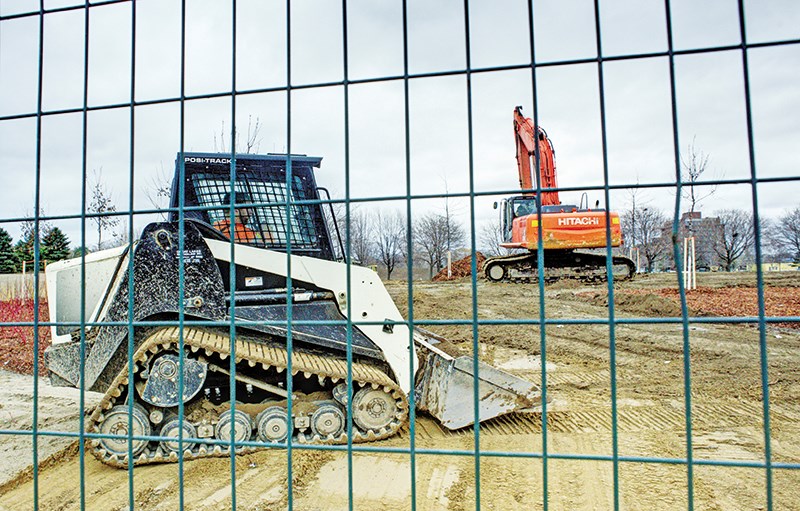Cathy Dobson
The first phase of the project to bury asbestos and other contaminants in Centennial Park should be finished this spring, two years after the city discovered pollutants in the soil.
City staff expects the public will regain access to the park’s playing field and berms by the end of May.
The $2.5 million first phase has gone smoothly and is on budget, says Joe Boothe, Sarnia’s superintendent of environmental services.
“We’ve got an excellent contractor,” he said of the London-based Bre-Ex Construction.
It was May 2013 when concern was raised about a tar-like substance bubbling to the surface in a small area of Centennial Park.
The city quickly surrounded about half the park with fencing, cutting access to a popular children’s playground and a large sports field used for major events like Bayfest and Ribfest.
That move proved to be prudent. One month later a consultant reported asbestos and lead levels exceeding Ministry of Environment standards by up to five times in some areas.
The discovery sparked debate in the community about the level of danger presented by contaminants found several feet below the surface. However, there was also the question of the tarry substance that rises to the surface every few years.
“We couldn’t leave it alone,” Boothe said. “Asbestos isn’t the only contaminant that was found.” Lead and various hydrocarbons are also present, likely from industrial fill dumped in the park in the 1960s.
Eighteen months after the fencing went up, city council decided to move in with bulldozers to begin a multi-million-dollar remediation.
On the advice of its consultants, and after public consultation, council agreed to a three-phase process that will ultimately cost $4.5 million to $6 million.
The first phase was highly visible this fall as heavy machinery scraped topsoil from the open field of the “bowl” and pushed it up the toboggan hills on the park’s north end, raising them by about 10 feet.
Smaller berms on the west and east sides of the field were removed, and the dirt redistributed to build the bigger hills in the north end.
The deteriorating MacLean Centre also came down, leaving nothing but a concrete pad.
The process to make public use of the park safe involves a layer of geotextile fabric like that sold at garden centres to control weeds.
It was laid over the contaminated area and covered with 20 inches of sand.
The sand is a good barrier and will allow for drainage in the park, said Boothe. An impermeable clay cap, typically used, would create flooding.
Finally, eight inches of topsoil was spread and left ready for seeding in the spring. Trees cut down to make way for the work will be replaced in May.
“The eight-foot fencing around the Phase One area will come down right after the first (grass) cut,” said city operations manager Bryan Prouse.
It will take much longer for the six-foot fence around the children’s playground and Dow People Place to come down. It encompasses Phases Two and Three of the remediation, and possibly the Legacy Project that was planned to celebrate the city’s 100th anniversary in 2014.
City council will be presented in January with several options for the final two phases, Prouse said.
“There are a lot of unanswered questions right now.”
